Our Top Picks: The Best National Parks for Beginner Hikers
Are you new to hiking and looking for the best national parks for beginner hikers? You’ve come to the right place. There’s something truly special about stepping into nature and experiencing the beauty of the great outdoors, especially when you’re just starting to hike. Whether you’re looking for gentle trails, breathtaking views, or the thrill of exploring a new area, we’ve got you covered with the top national parks perfect for beginner hikers.
Exploring these parks is a great way to gain confidence as a hiker. These trails are not too challenging but still incredibly rewarding. If you’re considering winter hiking, most of these parks are doable in winter unless noted otherwise. I canvassed some of my favorite outdoor lovers and asked them to provide their recommendations of the best national parks and hikes to try.
Disclaimer: This post may include affiliate links. If you click one of them, I may receive a small commission at no extra cost to you.
Yellowstone National Park, Wyoming
Grand Prismatic Spring Overlook Trail
Recommended by Melanie from The World Travel Girl
| Distance: 1.6 miles (2.7 kms) | Elevation: 61 metres (200 feet) |
| Dog Friendly: No | Park Fee: Yes |
Established in 1872, Yellowstone National Park spans over 2.2 million acres across mostly Wyoming with a small part in Montana and Idaho. This park showcases breathtaking landscapes, diverse wildlife, and captivating geothermal wonders
There are many hikes in Yellowstone, but one of my favorites is the Grand Prismatic Spring Overlook Trail. Start by walking the boardwalk for a close-up view of this geothermal wonder. Then take a short, easy hike to the overlook for a stunning aerial perspective of the thermal pool. The trail offers a unique vantage point and features a well-maintained path with boardwalks and gravel sections, accessible to most hikers. This hike is only partially accessible in winter, with limited access via snowmobile or guided snow coach tours.
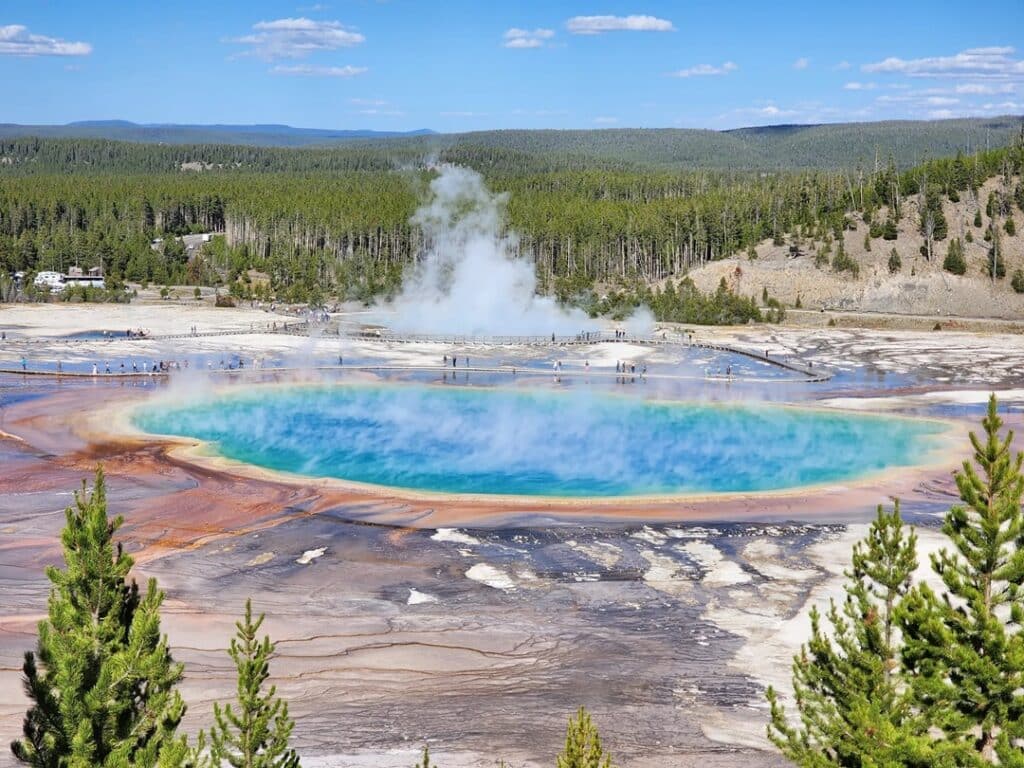
Bighorn National Forest, Wyoming
Bucking Mule Trail
Recommended by Melanie from The World Travel Girl
| Distance: 4.9 miles (7.9 kms) | Elevation: 138 metres (400 feet) |
| Dog Friendly: Yes | Park Fee: No |
This national forest is located in northern Wyoming and covers 1,115,073 acres. If you are traveling through northern Wyoming on a road trip, there is a good chance you will drive through Bighorn National Forest. The area is absolutely beautiful. From forests and alpine meadows to rugged canyons and arid high plains, it was one of the most varied and picturesque landscapes I have ever explored.
The trail begins with an easy walk through the forest. It then transitions to a rocky path with gentle inclines. The route becomes open as you ascend, so bring plenty of water to stay hydrated. At the top, you’ll enjoy amazing views of Devils Canyon from the Bucking Mule Falls Overlook. To the right, Bucking Mule Falls cascades 600 feet into the canyon, offering an impressive sight even from a distance. This was one of the best hikes in Bighorn that we did and I highly recommend it!
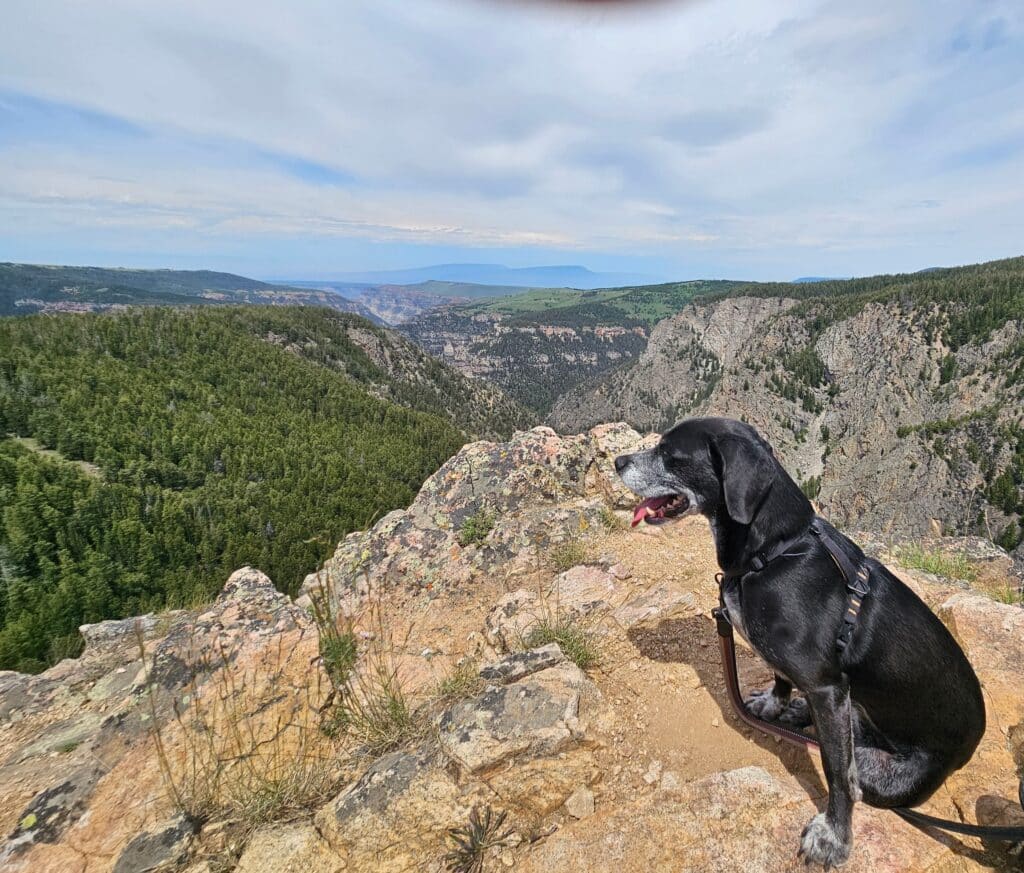
White Sands National Park, New Mexico
Backcountry Camping Trail
Recommended by Sabrina from New Mexico Insider
| Distance: 1.7 miles (2.7 kms) | Elevation: 2 metres (6 feet) |
| Dog Friendly: Yes | Park Fee: Yes |
The White Sands National Park is located in Southern New Mexico and is surrounded by beautiful mountain ranges on both sides. The closest airport is El Paso Airport, from there you can reach White Sands in about 2 hours of driving.
The Backcountry Camping Trail is one of the best beginner-friendly hikes in the US. The trail is a 1.7-mile long loop trail through the stunning gypsum sand dunes. You’ll mostly walk up and down some sand dunes, but all in all, there is not much elevation gain during the hike, which makes it very easy.
Make sure to bring good shoes, since it can be hard to walk on the dunes otherwise. Also, avoid going around noon in the summer months from May until October, because it can get pretty hot. Bring a lot of water and some sunscreen, it is pretty exposed.
This hike is awesome in winter, because daytime temperatures are comfortable for hiking and usually there is no snow in the area. I liked this hike in the park the most because the dunes there are very neat and not filled with bushes or other plants – looking great in pictures.
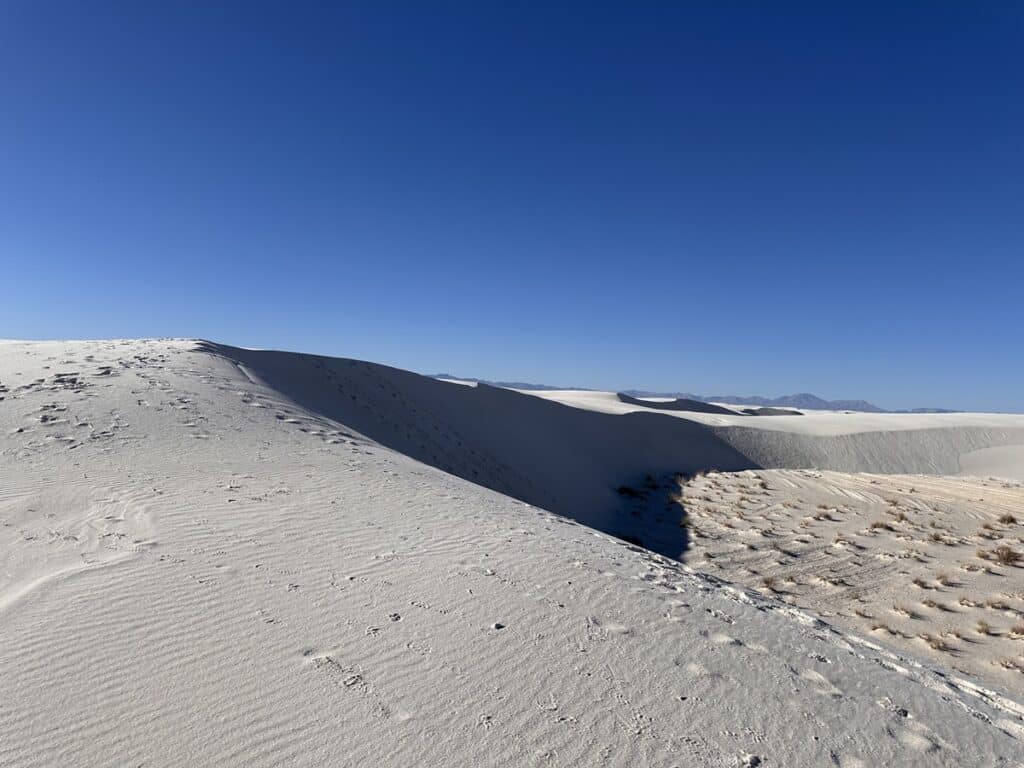
Rocky Mountain National Park, Colorado
Bear Lake Hike
Recommended by Sonia at Carey On Travels
| Distance: 0.7 miles (1.1 kms) | Elevation: 50 metres (49 feet) |
| Dog Friendly: No | Park Fee: Yes; Timed entry permits to Rocky Mountain National Park
and the Bear Creek Corridor are required |
Hiking the Bear Lake Trail in Rocky Mountain National Park (RMNP) in Colorado is a wonderful introduction to all of the wonderful day hikes in the park. While the 0.7-mile loop trail is short, it’s known for being handicap-accessible and for its breathtaking views of Hallett Peak. The trail is almost flat, leading through spruce and fir forests around this quiet mountain lake.
Many visitors combine this hike with an easy-moderate hike to Nymph Lake, Dream Lake, and Emerald Lake (3.2 miles roundtrip). We enjoy bringing visitors to these lakes, because they provide some of the easiest access to stunning alpine lakes that you’ll find in Colorado.
Don’t miss hiking in the fall when you can see the yellow and orange leaves on the aspen trees. In winter, bring your snowshoes for a chance to explore the snow-covered landscape.
Bear Lake Trail is a great place to begin your park adventures, whether you do this as a standalone hike or combine it with a hike to Emerald Lake.
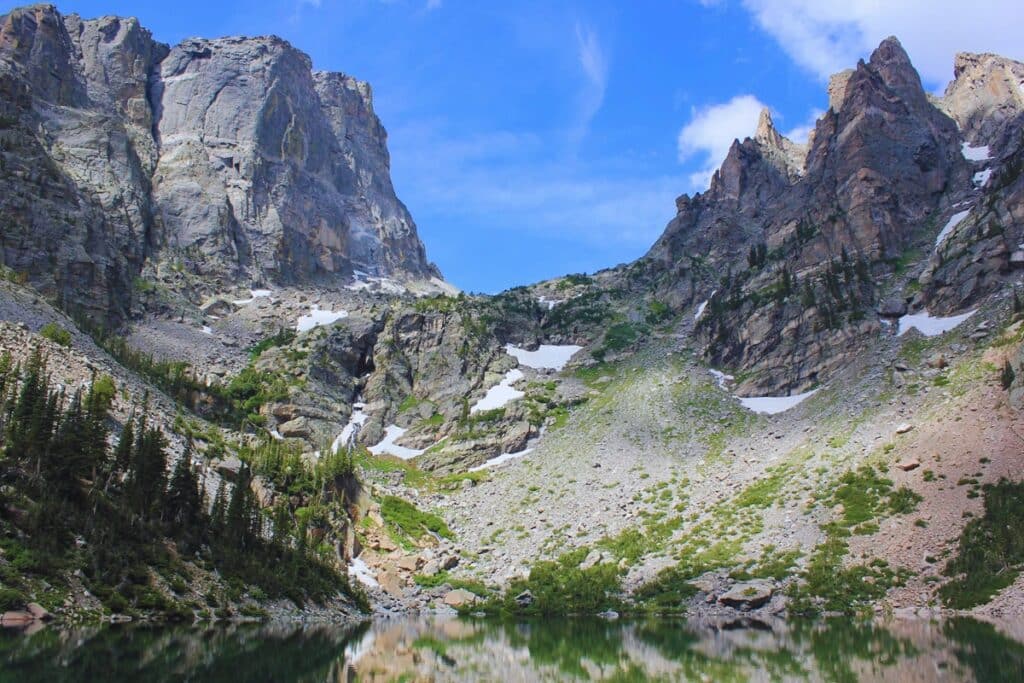
Denali National Park, Alaska
Horseshoe Lake Trail Hike
Recommended by Danika Clark at Destination Danika
| Distance: 2.1 miles (3.4 kms) | Elevation: 135 metres (446 feet) |
| Dog Friendly: Yes | Park Fee: Yes |
Located in the heart of Alaska, you will find Denali National Park. Denali National Park is known for its abundance of wildlife, remote location, and of course, incredible hiking trails!
Denali National Park is massive, covering over 7,000 square miles! A majority of the hikes are found deeper into the park, however my favorite trail is just a 5 minute walk away from the visitor center. This makes it the perfect beginner friendly hike! Horseshoe Lake Trail is a popular trail that leads visitors down to the river where they can see a massive Beaver dam, breathtaking views of the river between the mountains, and maybe even spot some wildlife along the way! The trail is best done from late springs-early fall, as the weather becomes quite unpredictable in Alaska outside of this time.
After working in Denali National Park for a summer, I fell in love with Horseshoe Lake Trail! It’s well maintained with boardwalks, benches, and a clear path. It’s the easiest accessible hike in Denali National Park without going too far.
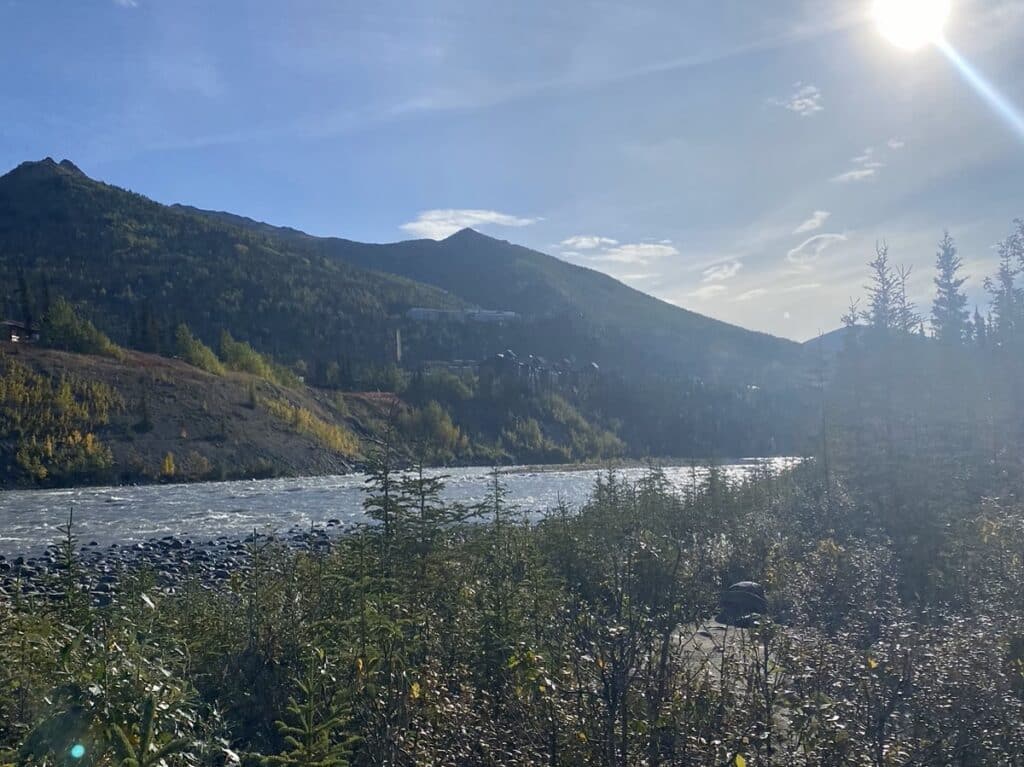
Grand Canyon National Park, Arizona
South Kaibab Trail To Skeleton Point Hike
Recommended by Serenity Lesley at Manifesting Serenity
| Distance: 5.8 miles (9.33 kms) | Elevation: 618 metres (2027 feet) |
| Dog Friendly: No | Park Fee: Yes | Difficulty: Hard |
Looking for a gorgeously rewarding view, while being able to work up a little bit of a sweat? The South Kaibab Trail To Skeleton Point Hike is one of them. It’s an out and back trail, up some stairs, offering a touch more stability than any kind of muddy trail. As well as gaining about 2,027ft of elevation. So, be sure to pace yourself, wear some knee braces, and bring some trekking poles to give you a bit more support.
Another amazing highlight to this trail is that there are 360 views of the beautiful dessert canyon landscape, some sightings of wildlife, and a center “stage” to see it from.
To enter the park, and truly soak up this view, be sure to bring 2x as much more water than you think you need, and snacks for extra energy boosts.
Now you’re set, excited, and ready to get started!
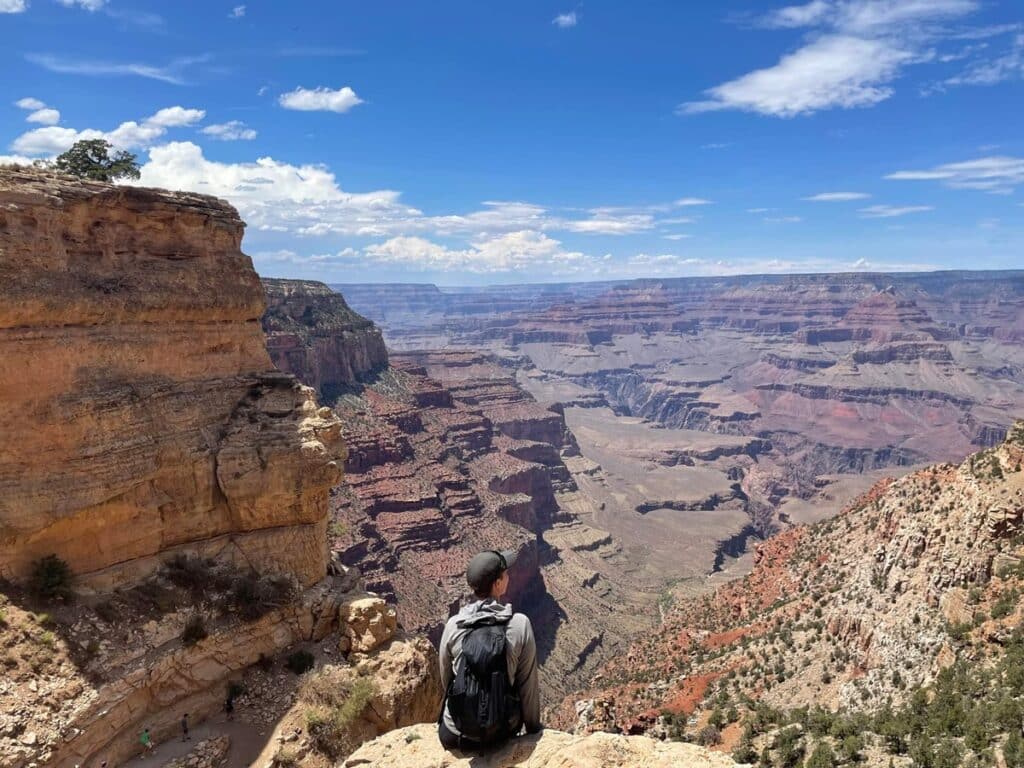
Yosemite National Park, California
Lower Yosemite Falls Trail
Recommended by Taylor Mallabar from No Trace Travel
| Distance: 1.2 miles (1.9 kms) | Elevation: 16 metres (55 feet) |
| Dog Friendly: Yes | Park Fee: Yes |
Yosemite National Park is among California’s most iconic destinations. The sheer cliffs and roaring waterfalls offer impressive views for its 3.5 million annual visitors. Luckily, you don’t have to venture too far from the road to experience the most famous waterfall in the park with the Lower Yosemite Falls trail!
The loop trail is only 1.2 miles (1.9 kilometers) on an ADA paved path. With only 55 feet of elevation gain, a bathroom at the start, and a viewing platform at the falls, it is a perfect beginner trail, with the bonus of allowing dogs on leash!
The best time to hike is early morning during the spring when crowds are lower and the falls are at their peak. Yosemite National Park requires reservations for visitors between April and October to avoid overcrowding. Unless the park is closed due to snow conditions, the Lower Yosemite Falls trail is open year-round, but be prepared for icy conditions in the winter.
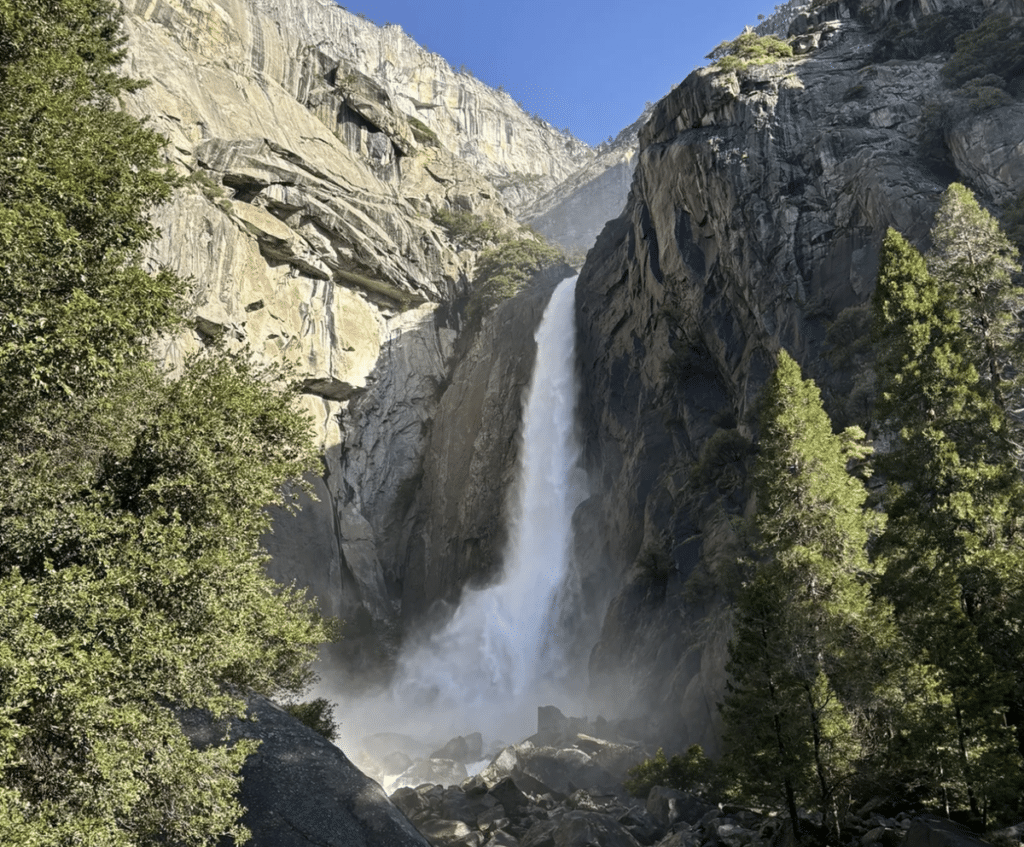
Bryce Canyon National Park, Utah
Queen’s Garden Hike
Recommended by Karen of Outdoor Adventure Sampler
| Distance: 2.1 miles (3.4 kms) | Elevation: 140 metres (459 feet) |
| Dog Friendly: No | Park Fee: Yes |
The Queen’s Garden Trail at Bryce Canyon National Park in Utah is the easiest trail that descends into the canyon. As you hike, you will see hoodoos, the colorful pillars of stone that look like pink and white sandcastles poured into a canyon. Weathering, erosion, and refreezing erodes the canyon walls to form windows in the rock and then into the distinctive sculpted hoodoos.
The Queen’s Garden Trail can be combined with the Navajo Loop for a 2.9 mile round trip hike. You will descend at Sunrise Point and ascend at Sunset Point. For another easier hike, enjoy cruising along the Rim Trail for spectacular views of one of the best canyons in the Southwest.
I hiked the Queen’s Garden Trail in a snowstorm once. The thick snowflakes frosted the hoodoos, turning the scenery into a powdery wonderland.
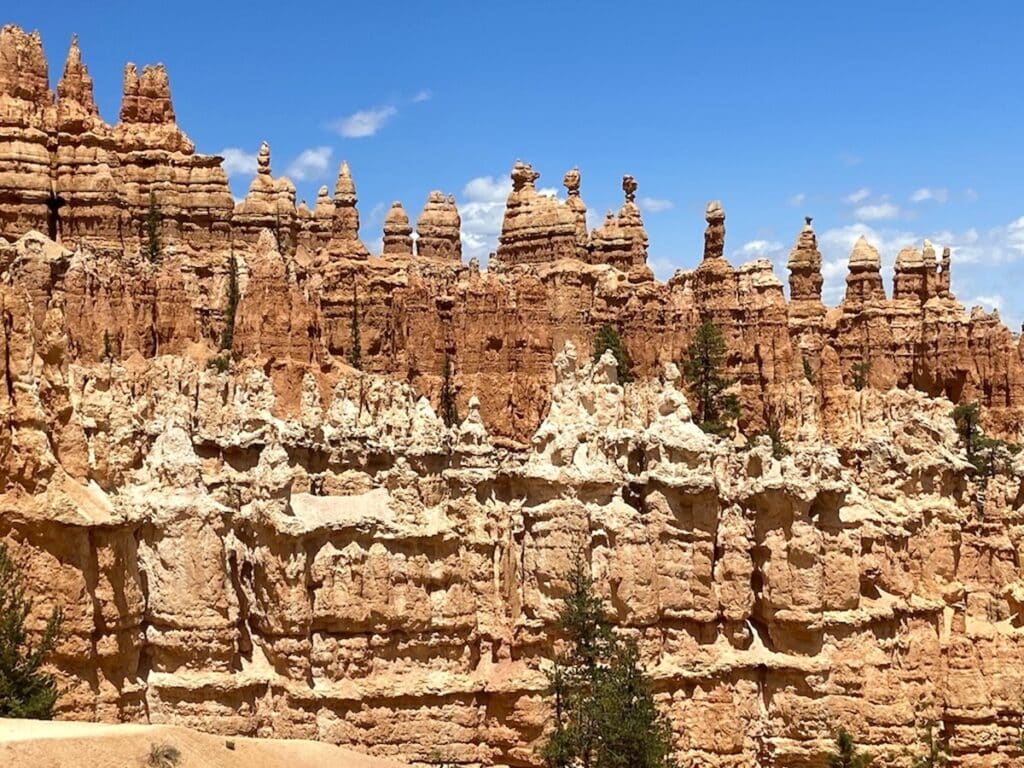
Olympic National Park, Washington
Hall of Mosses Trail
Recommended by Jess of Uprooted Traveler
| Distance: 1.1 miles (1.77 kms) | Elevation: 25 metres (82 feet) |
| Dog Friendly: No | Park Fee: Yes |
The Hall of Mosses Trail is one of the best hikes in Olympic National Park, taking you deep into Washington state’s Hoh Rainforest. This magical place is renowned for its incredible biodiversity—so much so that it’s actually a UNESCO World Heritage Site and a Biosphere Reserve.
The trail leads you through a particularly jaw-dropping section of the rainforest, with enormous primeval ferns and ancient hemlock and Sitka spruce trees, towering hundreds of feet overhead and dripping with moss. Keep your eyes peeled while you’re on the trail—besides hundreds of species of ferns, lichens, and trees, the Hall of Mosses is a great place to spot wildlife, including Roosevelt elk, coho salmon swimming through its Taft Creek, and even black bear.
It’s definitely a beginner-friendly trail but be prepared—the path is uneven from rocks and roots, so you’ll want to wear shoes with sufficient support and traction. Because of its natural beauty and accessibility, the Hall of Mosses is quite popular—so if you’re visiting during a popular time, like a weekend in the summer, be sure to get here early to enjoy the rainforest without all the crowds.
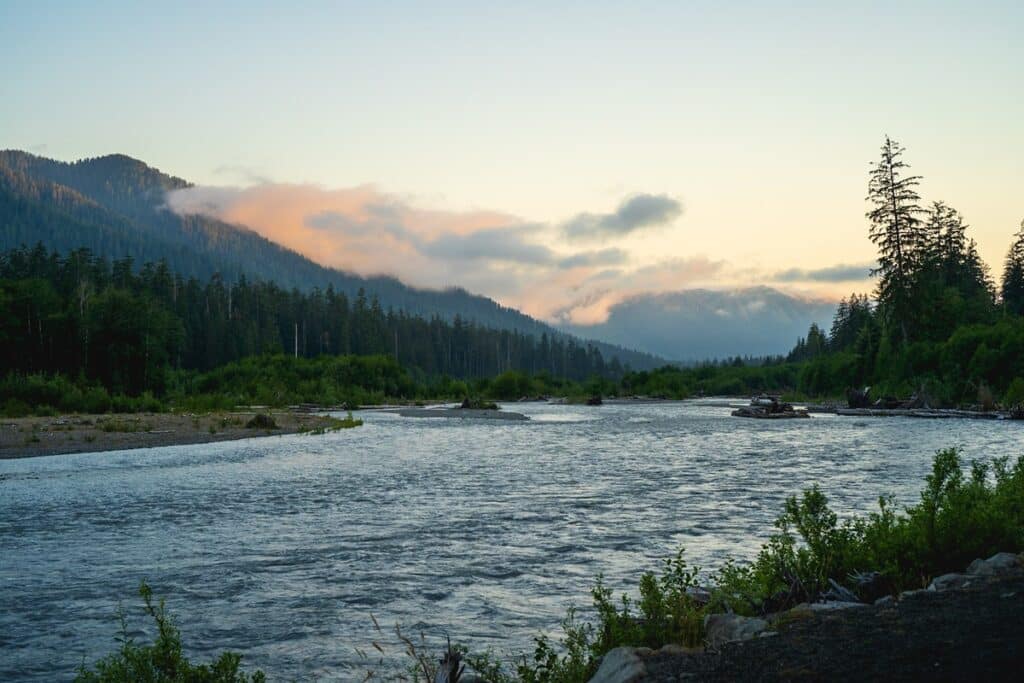
Mount Rainier National Park, Washington
Nisqually Vista Trail
Recommended by Serenity Lesley of Manifesting Serenity
| Distance: 1.1 miles (1.77 kms) | Elevation: 55 metres (180 feet) |
| Dog Friendly: No | Park Fee: Yes |
The best possible way that I could describe this hike would be that it’s by far the easiest trail with the most rewarding view that I’ve ever done. Even people with canes or strollers can experience this view. I’ll give you an idea of how it’s an easy choice by the specs, it’s a 1.1 mile round trip loop, has a low 180 ft elevation gain, and takes an average person 30 minutes to finish.
Also, be sure to dress warm, bring snow clothes and dress in layers. It can be common for Nisqually Vista Trail in Mt. Rainier National Park to have random snow spells, even in June and July. Although June and July are the best month’s to visit, little snow dustings can still happen.
No matter the weather, it’s still gorgeous, but just in different shades!
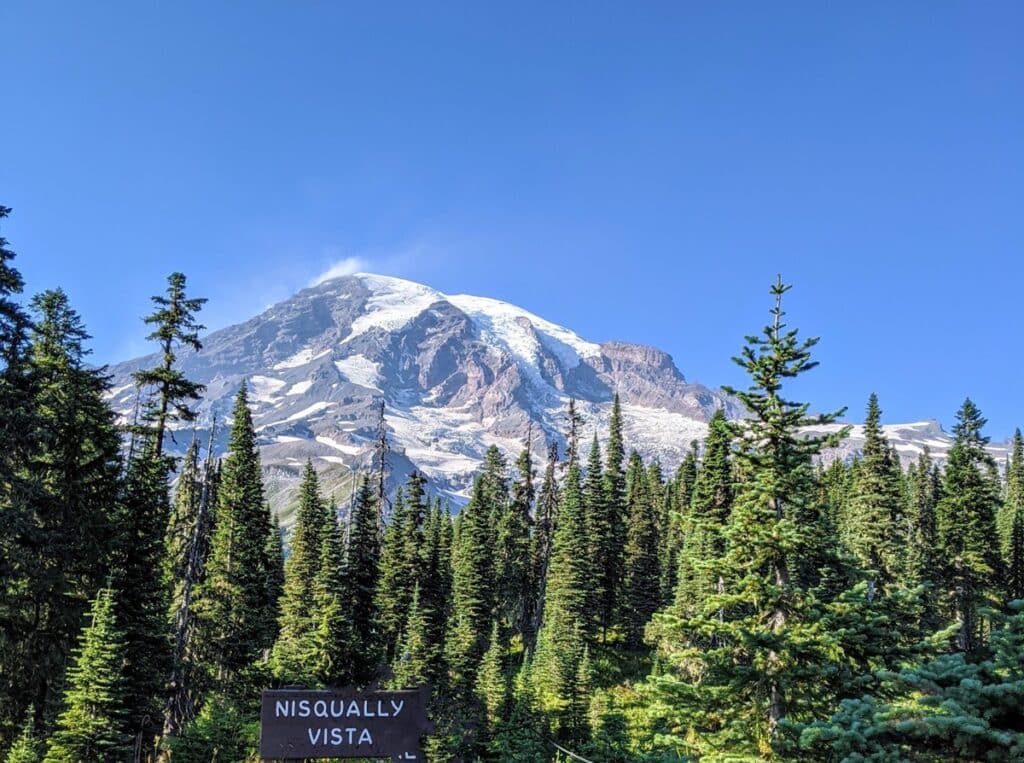
Zion National Park, Utah
The Watchman Trail
Recommended by Aaren of What Do You Sea
| Distance: 3.1 miles (5.0 kms) | Elevation: 194 metres (636 feet) |
| Dog Friendly: No | Park Fee: Yes |
Zion National Park is the crown jewel of National Parks in Utah. Although famous for its strenuous trails like the Narrows and Angels Landing, there are plenty of easy hikes in Zion to explore its globally recognized landscapes.
The Watchman Trail is a short hike to the park’s most famous landmark, a massive sandstone mountain towering above the Virgin River. The views along this trail are a post card image of Zion and therefore, it’s one of the most photographed and visited locations in the park. The ideal time to hike this trail is sunrise. This way you can avoid the crowds that flock here for sunset and avoid the brutal midday heat. Since the Watchman isn’t an overly difficult trail, it’s also a nice option if you’re visiting Zion in the winter.
At the end of the out-and-back trail, there is a small loop that takes you to the Watchman Overlook, which you definitely don’t want to miss. At the top, you can see the entire strip of nearby Springdale against a backdrop of the park. Along the way, be on the lookout for bighorn sheep and other wildlife that tend to frequent the area.
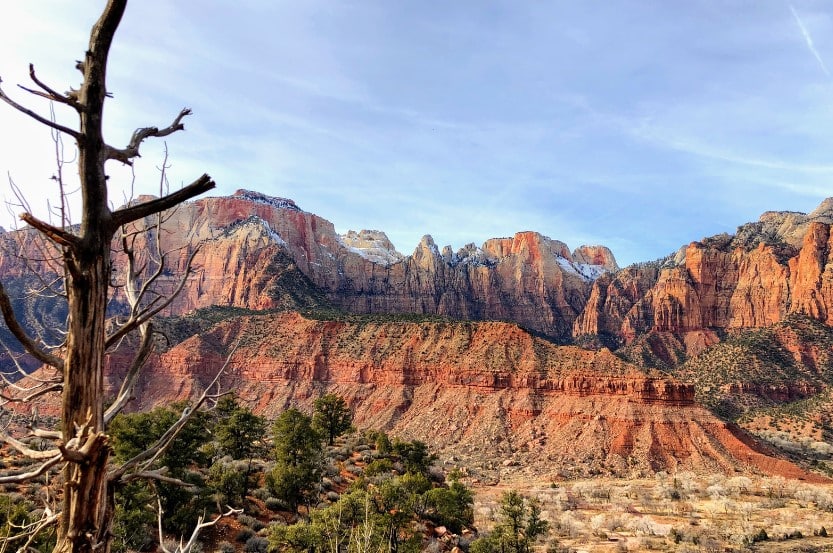
Kejimkujik National Park, Nova Scotia
Hemlocks & Hardwoods Hike
Recommended by Joanna at The World In My Pocket
| Distance: 3.1 miles (5.0 kms) | Elevation: 93 metres (305 feet) |
| Dog Friendly: Yes | Park Fee: Yes |
Kejimkujik National Park is located in Nova Scotia, Canada. It has a network of trails, most of them marked as easy or moderate. Hemlocks & Hardwoods is an easy trail through an ancient forest that was here when the Mi’kmaq first nations people were the only ones inhabiting this land.
The path is not just pleasant but educational as well, and it makes a great choice when you are spending a day in Kejimkujik National Park. Parts of it is boarded, to protect the fragile roots of the old trees. I enjoyed this hike a lot because it was extremely peaceful, with no other people around. I only met a couple, who were returning, when I started the trail.
There are chances of meeting bears on this trail, but I haven’t, thankfully. The trail ends at a beautiful dam, where you can rent a camping spot and spend the night in nature. Whilst the trail is open during winter, the road closes in November, so you have to walk 2.5 kilometres extra, from the main road.
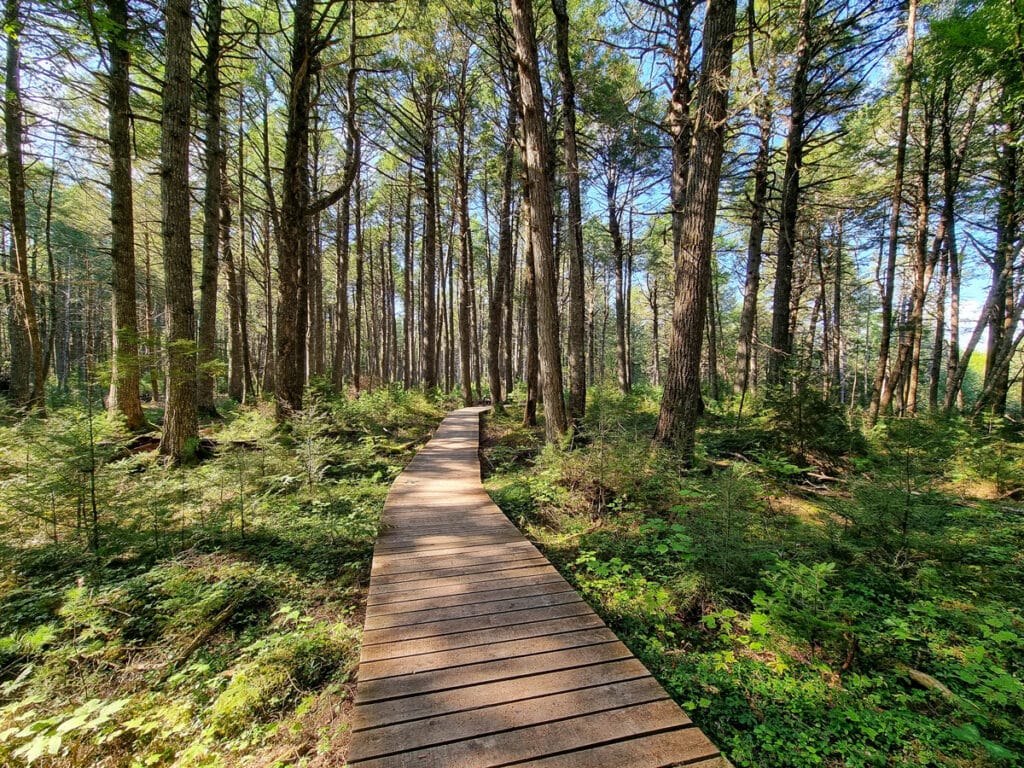
Banff National Park, Alberta
Johnston Canyon, Lower Falls
Recommended by Melanie of The World Travel Girl
| Distance: 1.4 miles (2.3 kms) | Elevation: 143 metres (469 feet) |
| Dog Friendly: Yes | Park Fee: Yes |
Located in the Canadian Rockies in Alberta, Banff National Park is the country’s oldest national park. Take the trip north and experience the beauty of this area. I love winter hiking in Banff National Park, but ALL of the hikes are doable year round.
This is one of the most popular sites to visit when in Banff. This hike is accessible to most, with well-maintained trails and steel catwalks built into the canyon walls. The highlight is the massive frozen waterfall at the Lower Falls. You can view the falls directly, or veer off the trail through a small ‘cave’ for a different perspective. There may be a line for the cave, but it’s worth it!
After the Lower Falls, you can choose to head back or continue to the Upper Falls. The trails may be icy but are mostly steel grates with railings. Enjoy the stunning icy waterfalls and scenery from the lookout. Either option is beautiful, especially in the winter.
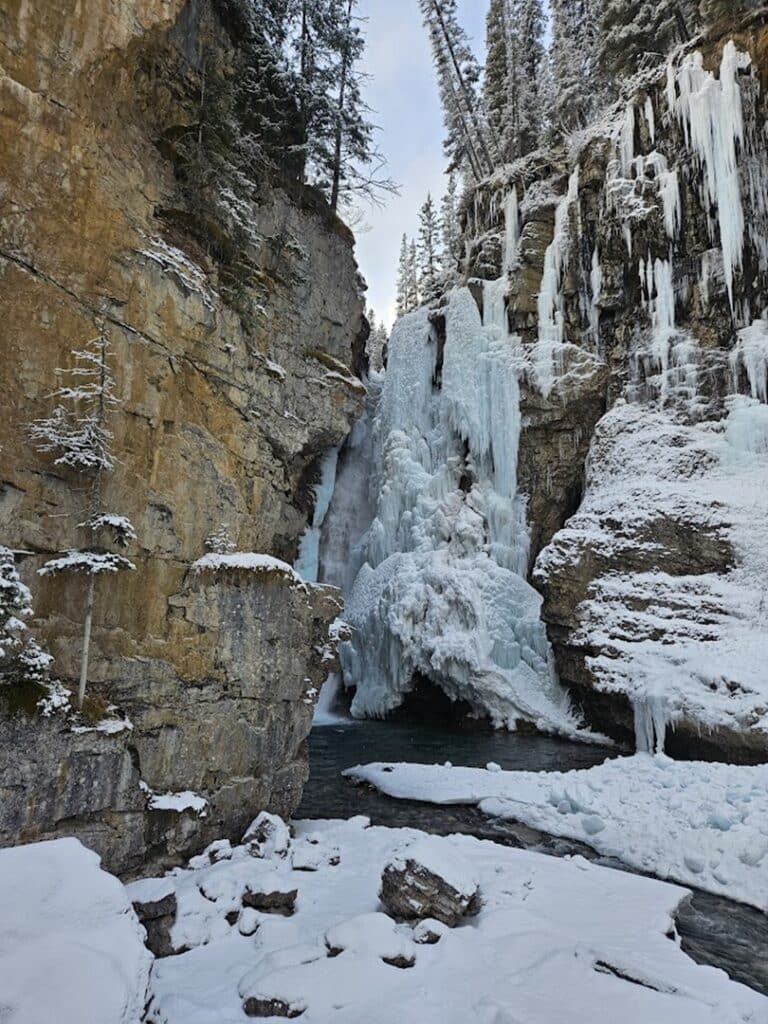
Jasper National Park
Maligne Canyon
Recommended by Melanie of The World Travel Girl
| Distance: 3.0 miles (4.8 kms) | Elevation: 161 metres (528 feet) |
| Dog Friendly: Yes | Park Fee: Yes |
Jasper National Park, Alberta is over 11,000 square kilometers in the Canadian Rockies, and is the largest national park in Canada. It is known for its stunning mountain scenery, abundant wildlife, and extensive network of hiking trails. To visit this park, you need to travel about 3.5 hours northwest of Banff, but I promise you that the hiking in Jasper is amazing!
There are so many beautiful hikes but Maligne Canyon is one of my favorites. The Maligne Canyon Loop is an accessible and scenic trail, perfect for beginners. It offers breathtaking viewpoints from the Fourth, Third, Second, and First Bridges. The trail is manageable with easy inclines, suitable for most fitness levels, and has a dramatic, deep, narrow canyon carved by water over many years. An early morning hike is recommended to avoid crowds and enjoy the serene setting.
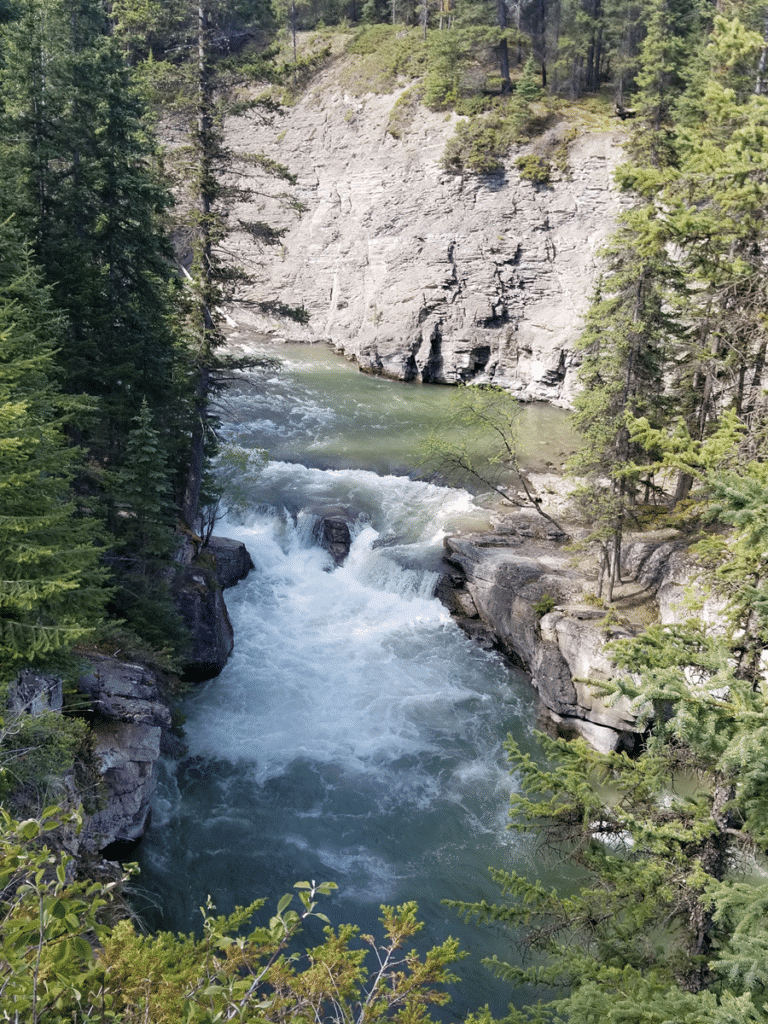
FAQs
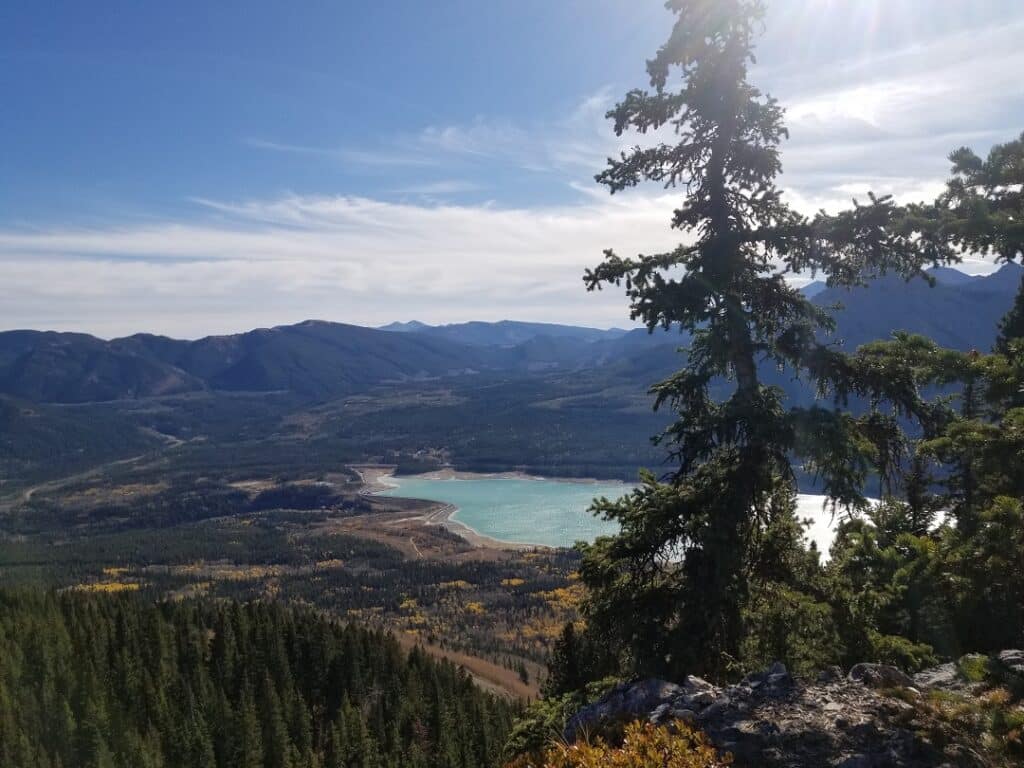
Final Thoughts
Visiting the best national parks for beginner hikers is a fantastic way to connect with nature, get some exercise, and discover the beauty our national parks have to offer. With this guide, you’ll be well-prepared to embark on your hiking adventures, wherever you choose to go. Happy hiking!
If you enjoyed my post, follow me on social media or subscribe to my newsletter below, so you can stay connected on future posts, trips, tips and more.


